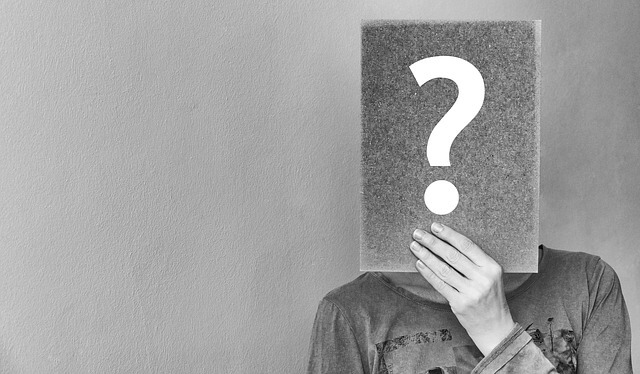Bias Blind Spot: Definition and Examples
The bias blind spot is a cognitive bias that involves not being able to recognize your own biases. You probably realize that there are subtle cognitive biases that influence your perceptions and decisions. Yet, if you are like most people, you also tend to notice those biases more in other people than in yourself. This…

The bias blind spot is a cognitive bias that involves not being able to recognize your own biases.
You probably realize that there are subtle cognitive biases that influence your perceptions and decisions. Yet, if you are like most people, you also tend to notice those biases more in other people than in yourself.
This tendency to recognize cognitive biases in others and still fail to see how bias influences your own thinking is known as the bias blind spot.
Simply put, the blind spot bias is a cognitive blind spot that keeps you from seeing your own biases. Like a blind spot in a car, this bias blind spot can prevent us from seeing things that can have a critical role in the decisions we make.
In this article, learn more about how the bias blind spot works and what you can do to become more aware of your own biases.

What Is a Blind Spot?
As you are driving down the freeway, you glance over your shoulder and check the rear-view mirror. Seeing nothing in the other lane, you begin to merge over. As you are making the move, another car suddenly blares its horn and you instantly realize that there indeed was another vehicle in that lane–it was in your blind spot.
A blind spot is simply something that you consistently overlook, often unintentionally.
Unable to see the other car, you made a driving maneuver that easily could have ended in a traffic accident.
The bias blind spot is similar in that it affects the choices you make, even though you cannot see it. As you weigh a decision, many factors play a role in your thoughts, yet it is often the factors we are unaware of that may impact these choices in ways we may not have considered.
This blind spot for your biases can lead to faulty or distorted thinking, leading to poor decision-making. Sometimes the consequences of this flawed thinking may be relatively minor, but it can lead to regrettable outcomes in other situations.
How Common Is the Bias Blind Spot?
Interestingly, people often believe they are less likely to be biased than their peers. According to a study published in the journal Management Science, nearly all people experience blind spot bias.
Out of 661 participants, only one stated they were more biased than the average person. The majority of those in the study, approximately 85%, actually believed that they were less biased, whether or not they exhibited unbiased decision-making.
“People seem to have no idea how biased they are. Whether a good decision-maker or a bad one, everyone thinks that they are less biased than their peers,” explained Carey Morewedge, one of the study’s authors and an associate professor of marketing at Boston University.
“This susceptibility to the bias blind spot appears to be pervasive, and is unrelated to people’s intelligence, self-esteem, and actual ability to make unbiased judgments and decisions.”
What Causes the Bias Blind Spot?
There are a number of different factors that contribute to this type of bias. Some of these include:
Self-Perception
A desire to see oneself positively as a rational, logical thinker plays a role. People realize that being biased is not a desirable quality, so they tend to view their own decisions as being the result of pure logic and reason.
Unconscious Processes
The reality is that many of the mental processes that go into making a decision are unconscious, so people tend not to be aware of how heuristics, biases, and other mental shortcuts affect the choices they make.
Even when people become aware of some of their own biases, they often find it difficult to control or change.
Effects of the Bias Blind Spot
The researchers who conducted the previously mentioned study also suggest that the bias blind spot can have a significant effect on behavior.
Impact on Healthcare
“When physicians receive gifts from pharmaceutical companies, they may claim that the gifts do not affect their decisions about what medicine to prescribe because they have no memory of the gifts biasing their prescriptions,” explained Erin McCormick, one of the study’s authors.
McCormick notes that most people would agree that gifts unconsciously bias physicians. However, people tend to see their own behaviors differently. While they think that such gifts influence others, they believe that their own decisions are not affected. This disparity, she notes, is caused by the bias blind spot, which affects many different types of judgements and decisions.
Impact on Political Issues
Political donations may be another example of how the bias blind operates. Politicians often accuse other elected officials of being swayed by donations from lobbies, yet insist that their own votes on specific issues are not swayed by who does or does not donate to their campaigns.
Factors That Impact the Bias Blind Spot
The researchers conducted experiments that involved validating a bias blind spot assessment tool that they developed to see whether bias blind spot differences were associated with decision-making abilities, IQ, and self-esteem.
Additional experiments also look at how the bias blind spot related to the social comparisons people make, how people handled advice from others, and how receptive they were to training designed to reduce biases.
People who tend to have higher levels of blind spot bias are also:
- Less likely to accept advice from others, whether they are peers or experts
- Less likely to learn from training that would reduce biases and help them make better decisions
Essentially, many people who are highly biased not only believe that they are less biased than their peers; they are also more likely to ignore the input of experts and more likely to resist efforts to reduce their biases.
Such findings may be particularly relevant today as people combat political conspiracy theories fueled by biased thinking. The research suggests that not only are many people who hold such beliefs blind to their own biases–but they are also not receptive to information that might correct their faulty thinking.
Sources:
Carnegie Mellon University. Researchers find everyone has a bias blind spot.
Page, A. (2009). Unconscious bias and the limits of director independence. University of Illinois Law Review, 1: 237–294.
Scopelliti, I., Morewedge, C.K., McCormick, E., Min, H.L., Lebrecht, S., & Kassam, K.S. (2015). Blind spot bias: Structure, measurement, and consequences. Management Science, 201561:10 , 2468-2486.





